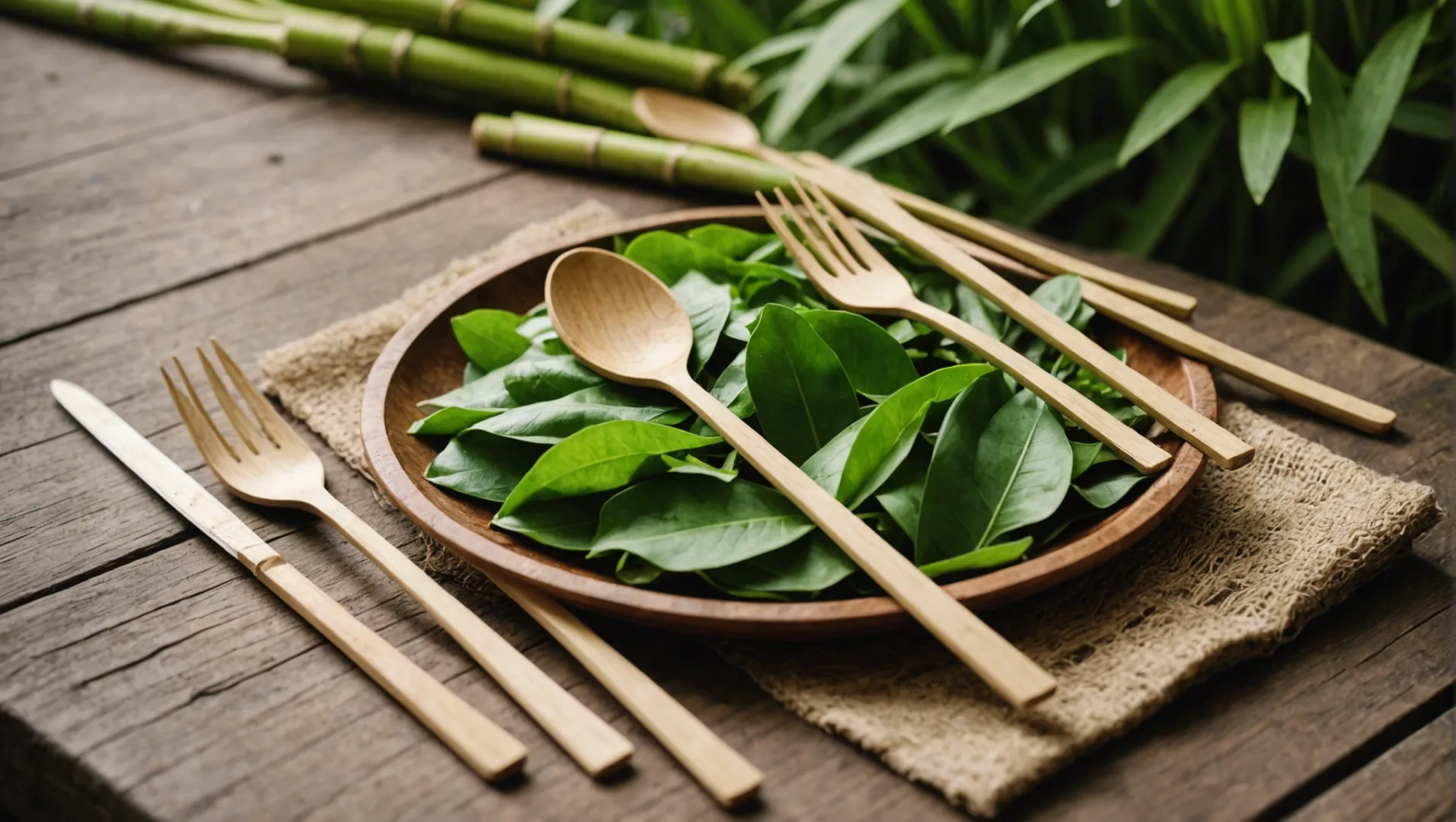
Imagine biting into a delicious meal, knowing your utensils are doing their part to protect our planet. That’s the promise of enhancing wooden cutlery with natural materials!
Integrating natural materials such as bamboo fiber and sugarcane pulp into disposable wooden cutlery can enhance its durability and sustainability. These materials not only strengthen the cutlery but also boost its eco-friendliness by making it more biodegradable and reducing its carbon footprint.
While the idea of combining bamboo fiber and sugarcane pulp with wooden cutlery is exciting, let's dive deeper into the benefits and implications of this innovative approach.
Bamboo fiber enhances wooden cutlery's durability.True
Bamboo fiber increases tensile strength and flexibility, reducing breakage.
What Are the Environmental Benefits of Using Bamboo Fiber and Sugarcane Pulp?
Discover how bamboo fiber and sugarcane pulp can revolutionize sustainable cutlery and promote eco-friendly living.
Bamboo fiber and sugarcane pulp offer significant environmental benefits by enhancing the biodegradability and sustainability of products. They reduce reliance on non-renewable resources, lower carbon footprints, and support waste reduction through compostability.
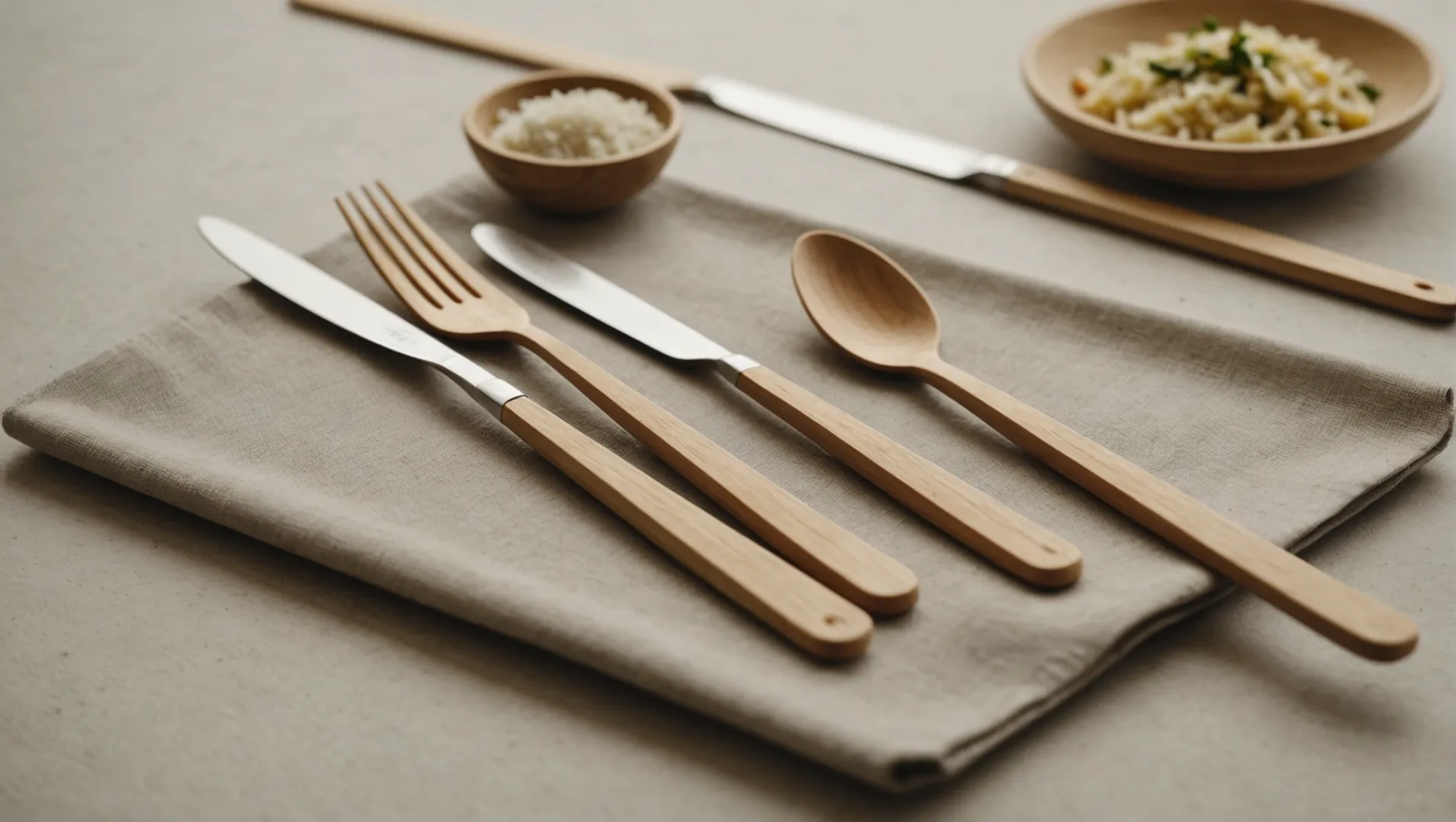
Sustainable Sourcing and Rapid Renewability
Bamboo is one of the fastest-growing plants on Earth, reaching maturity within three to five years without the need for pesticides or fertilizers. This rapid renewability makes bamboo an excellent sustainable resource. By integrating bamboo fiber1 into products, manufacturers can reduce dependence on slower-growing trees, preserving forest ecosystems and biodiversity.
Sugarcane pulp, a byproduct of the sugar industry, utilizes material that would otherwise go to waste. This not only decreases environmental waste but also provides an additional revenue stream for sugarcane farmers, promoting economic sustainability. The pulp's inclusion in products like cutlery means less need for virgin materials, thus conserving natural resources.
Enhanced Biodegradability
Both bamboo fiber and sugarcane pulp are biodegradable, breaking down naturally without leaving harmful residues. This is crucial in combatting plastic pollution and landfill accumulation. Products made from these materials can typically decompose within a few months under composting conditions, returning nutrients to the soil and supporting the growth of new plants.
According to research, bamboo fiber's natural lignin content enhances its breakdown process, making it particularly effective in creating fully compostable products. Meanwhile, sugarcane pulp's cellulose content accelerates decomposition compared to conventional plastics. By choosing cutlery made from these materials, consumers contribute to a closed-loop system where waste is minimized and resources are cycled back into the ecosystem.
Reducing Carbon Footprint
The production processes for bamboo and sugarcane materials are generally more energy-efficient than those for conventional plastics. Bamboo absorbs large amounts of CO2 during its growth cycle, which helps mitigate climate change by offsetting emissions produced during manufacturing.
Using sugarcane pulp also reduces the need for burning fossil fuels, as it leverages existing agricultural byproducts. This results in a lower overall carbon footprint for products made from these materials compared to those derived from petroleum-based plastics.
Contribution to Circular Economy
Embracing a circular economy approach means designing products that extend beyond single-use and contribute to a sustainable life cycle. Products2 made from bamboo fiber and sugarcane pulp fit seamlessly into this model by being both renewable and recyclable.
Implementing these materials not only supports environmental goals but also aligns with increasing consumer demand for green products. As regulations on single-use plastics tighten globally, bamboo and sugarcane alternatives represent innovative solutions that resonate with eco-conscious markets.
Bamboo fiber and sugarcane pulp are biodegradable.True
Both materials break down naturally, reducing landfill waste.
Sugarcane pulp requires pesticides for growth.False
Sugarcane pulp is a byproduct and doesn't require additional pesticides.
How Do Bamboo Fiber and Sugarcane Pulp Improve Cutlery Durability?
Discover how integrating bamboo fiber and sugarcane pulp into cutlery design enhances durability and eco-friendliness.
Bamboo fiber and sugarcane pulp enhance cutlery durability by reinforcing the material's structural integrity. These natural additives provide strength, reduce brittleness, and increase longevity, making cutlery less prone to breakage while maintaining an eco-friendly profile.
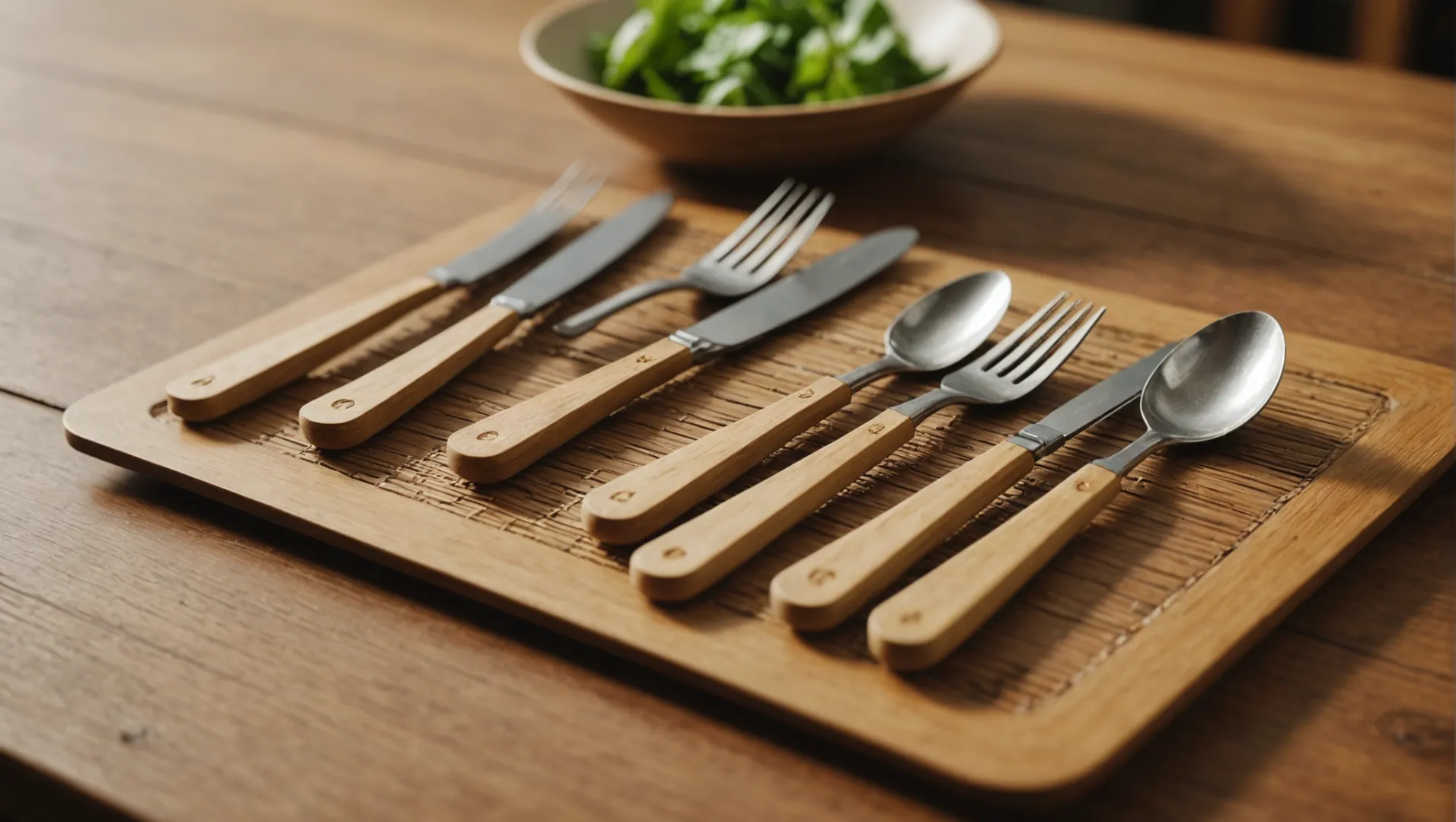
The Structural Benefits of Bamboo Fiber
Bamboo fiber is renowned for its high tensile strength and lightweight properties. By incorporating it into disposable cutlery3, manufacturers can create utensils that are not only stronger but also lighter than traditional wooden alternatives.
- Tensile Strength: Bamboo fiber's inherent strength reduces the likelihood of cutlery snapping under pressure.
- Flexibility: It provides flexibility that helps cutlery withstand bending forces without breaking.
Bamboo fibers also offer a smooth surface finish, which can be beneficial in creating a more pleasant user experience.
The Reinforcing Role of Sugarcane Pulp
Sugarcane pulp, often used as a byproduct in the sugar industry, adds bulk and resilience to cutlery. Its fibrous nature enhances the overall durability of the product.
- Increased Bulk: Sugarcane pulp adds volume, reducing the need for thick wooden sections, thus conserving resources.
- Resilience: The pulp's fibers interlock with wood fibers, providing additional structural integrity.
Moreover, using sugarcane pulp can improve the biodegradability of cutlery, aligning with environmental goals by reducing waste impact.
Combined Impact on Eco-Friendly Durability
When bamboo fiber and sugarcane pulp are combined, the result is a composite material that excels in both durability and sustainability. Here's how:
| Property | Bamboo Fiber | Sugarcane Pulp | Combined Effect |
|---|---|---|---|
| Strength | High | Moderate | Enhanced |
| Weight | Low | Moderate | Balanced |
| Flexibility | High | Moderate | Optimized |
| Biodegradability | High | High | Maximized |
The integration of these materials results in cutlery that not only performs better but is also better for the planet.
Such innovations are crucial as global regulations4 increasingly demand eco-friendly solutions.
Bamboo fiber increases cutlery weight.False
Bamboo fiber is lightweight, reducing the overall weight of cutlery.
Sugarcane pulp improves cutlery biodegradability.True
Sugarcane pulp enhances biodegradability, reducing environmental impact.
Can Natural Coatings Enhance the Performance of Wooden Cutlery?
Natural coatings like beeswax and plant oils are used to improve wooden cutlery's durability and hygiene. But do they really work?
Natural coatings enhance wooden cutlery by providing a protective barrier against moisture and bacterial growth. These coatings, such as beeswax and plant oils, help maintain the utensils' structural integrity and appearance over time. Regular reapplication is needed to sustain their effectiveness.
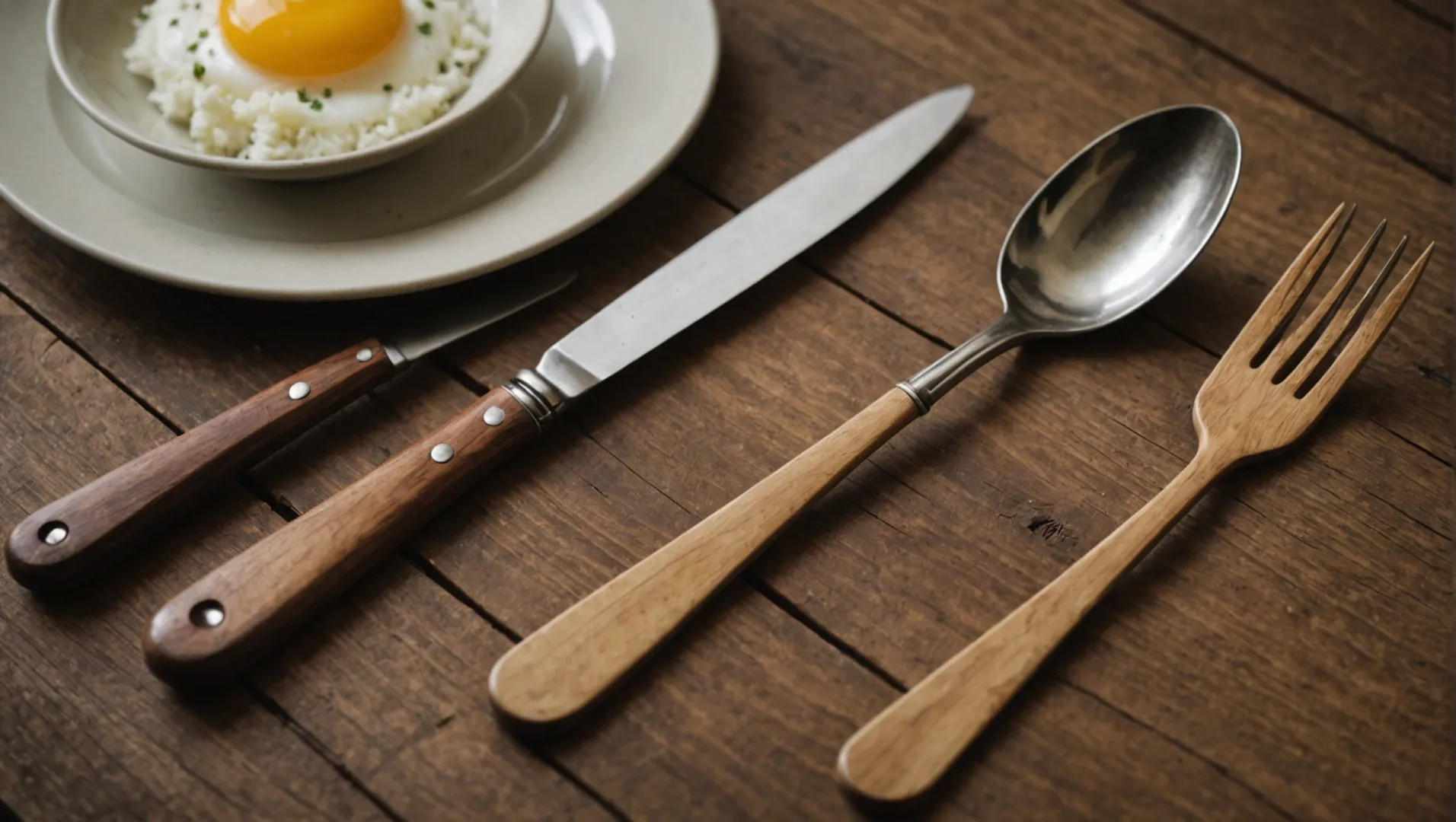
Understanding Natural Coatings
Natural coatings are applied to wooden cutlery to improve durability, aesthetics, and hygiene. Commonly used substances include beeswax, coconut oil, and mineral oil, each providing a unique set of benefits. These coatings create a barrier that prevents moisture absorption, which can lead to warping and bacterial growth.
Benefits of Beeswax and Plant Oils
Beeswax: Known for its water-repellent properties, beeswax is often used to seal wooden surfaces. It offers a natural shine and protects against moisture without altering the wood's texture. The application process involves heating the wax slightly and rubbing it onto the cutlery with a soft cloth.
Plant Oils: Oils like coconut and linseed are absorbed by the wood, nourishing it from within. They help in maintaining the wood’s natural color and texture while providing a degree of protection against water and wear.
Enhancing Longevity and Hygiene
Wooden cutlery treated with natural coatings not only lasts longer but also maintains better hygiene standards. The protective layer reduces the chances of cracks and splinters, which can harbor bacteria. However, these coatings can wear off over time, requiring regular maintenance.
| Coating Type | Primary Benefit | Reapplication Frequency |
|---|---|---|
| Beeswax | Water resistance | Every 3 months |
| Coconut Oil | Deep nourishment | Monthly |
| Linseed Oil | UV protection and finish | Bi-monthly |
Challenges in Maintenance
While natural coatings provide numerous benefits, they require consistent care. Improper maintenance can lead to the coating wearing off faster, leaving the cutlery vulnerable to damage. Users should avoid dishwasher use and prolonged water exposure to prolong the life of the coating.
Innovations in Natural Coatings
Some companies are exploring innovative natural coatings that integrate antimicrobial properties. These advanced coatings use plant extracts that offer additional protection against bacteria while maintaining environmental friendliness.
For instance, certain brands are experimenting with composite coatings5 combining multiple natural oils to increase longevity. Such advancements can significantly improve the overall performance of wooden cutlery, offering consumers a more sustainable choice for everyday use.
Beeswax provides water resistance for wooden cutlery.True
Beeswax creates a water-repellent barrier, protecting cutlery.
Natural coatings eliminate the need for cutlery maintenance.False
Regular reapplication is necessary to maintain coating effectiveness.
What Role Do Certifications Play in Sustainable Cutlery Production?
Certifications are pivotal in verifying the eco-friendliness and safety of sustainable cutlery, providing consumers with the assurance of quality and responsible sourcing.
Certifications in sustainable cutlery production, like FSC for wood sourcing and FDA for safety, ensure that products meet environmental and health standards. These certifications not only validate the sustainability claims but also build trust among consumers by confirming the ethical practices of manufacturers.
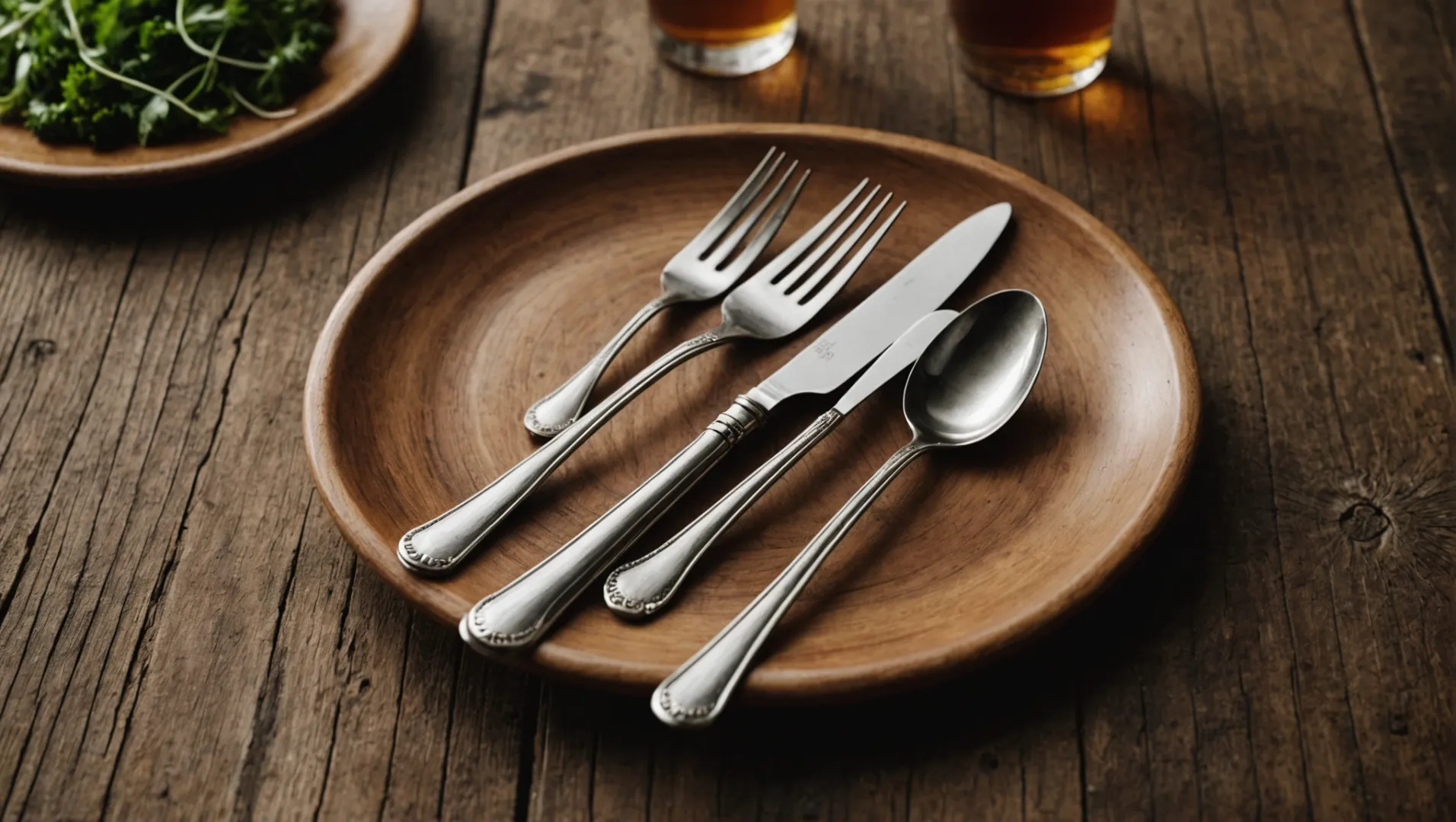
Understanding the Importance of Certifications
In sustainable cutlery production, certifications serve as a badge of credibility. They provide both consumers and businesses with a framework to assess the environmental impact and safety of cutlery products. For instance, certifications such as the FSC6 (Forest Stewardship Council) ensure that wood used in cutlery is sourced from responsibly managed forests that provide environmental, social, and economic benefits.
Additionally, food safety certifications like the FDA7 (Food and Drug Administration) or LFGB in Europe confirm that the cutlery is safe for food contact, offering assurance against potential chemical hazards.
Building Consumer Trust Through Transparency
Certifications help build consumer trust by making supply chains more transparent. Technologies such as blockchain can trace the origin of raw materials, offering verifiable proof that wood or other materials are sourced sustainably. This kind of transparency is increasingly valued by eco-conscious consumers who demand accountability from brands.
Moreover, knowing that a product is certified to meet specific environmental standards provides customers with confidence that their purchase supports responsible manufacturing processes.
The Competitive Edge of Certified Products
In markets where environmental regulations are tightening, possessing eco-certifications can provide a significant competitive advantage. Companies that invest in certifications often find themselves appealing to a broader audience who prioritize sustainability. For example, using a Life Cycle Analysis8 (LCA) to quantify the energy and resources consumed during production can showcase a company's commitment to minimizing its carbon footprint.
A well-certified product not only meets regulatory requirements but also positions itself favorably against non-certified competitors, potentially commanding higher market value and customer loyalty.
Certification Challenges and Considerations
While certifications offer numerous benefits, obtaining them can be resource-intensive. Companies must often invest in audits, documentation, and compliance measures to meet certification standards. Furthermore, they need to stay updated on evolving standards and regulations to maintain their certifications over time.
Despite these challenges, the long-term advantages of holding certifications—such as market differentiation and increased consumer trust—often outweigh the initial investment required.
FSC certification ensures sustainable wood sourcing for cutlery.True
FSC certifies that wood is sourced from responsibly managed forests.
FDA certification is not necessary for cutlery safety.False
FDA certification confirms cutlery is safe for food contact.
Conclusion
By innovating with bamboo fiber and sugarcane pulp, disposable wooden cutlery can achieve greater sustainability and functionality. This evolution encourages us to rethink our daily choices for a greener planet.
-
Understand why bamboo fiber is a top choice for eco-friendly materials.: Pulp production and the breaking down of pulp to turn it into a fiber often requires large quantities of acid and toxic chemicals that pollute air and water. ↩
-
Explore how these materials support a circular economy effectively.: By repurposing this byproduct, the pulp industry minimizes the accumulation of agricultural residue and contributes to a circular economy. With ... ↩
-
Learn how bamboo fiber strengthens and lightens disposable cutlery.: Bamboo is an excellent choice of material for cooking spoons. They do not only possess antibacterial properties but are also heat and scratch- ... ↩
-
Understand how international laws are shaping sustainable cutlery solutions.: Banned items: straws, drinks stirrers and disposable cutlery, cotton bud sticks, plates (plastic-lined paper options included), balloon sticks, expanded ... ↩
-
Explore innovative coatings enhancing cutlery longevity with multiple natural oils.: The biggest upside of using wood to replace plastic cutlery is that it's a natural, renewable material. This means no fossil-based ingredients are needed to ... ↩
-
FSC certification verifies sustainable wood sourcing practices.: FSC certification ensures that products come from responsibly managed forests that provide environmental, social and economic benefits. ↩
-
FDA ensures cutlery is safe for food contact.: Products may also be labeled as FDA compliant, which also means they meet FDA standards and indicate that the product is made from food-grade ... ↩
-
LCA quantifies energy use, boosting eco-credentials.: A Life Cycle Assessment (LCA) measures the environmental impacts of a product or service. Learn all about LCA in our extensive guide. ↩

